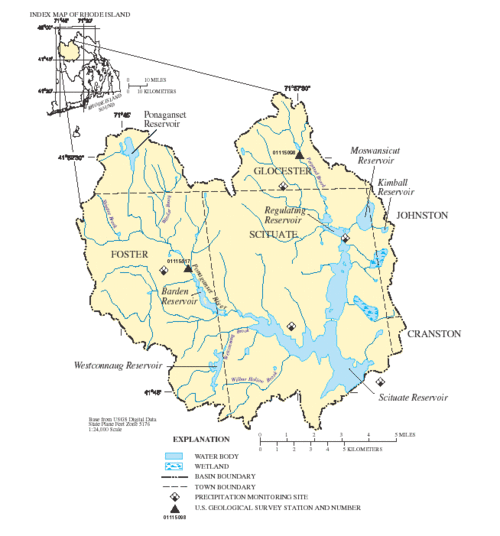Via ecoRI News (ecori.org)
Despite being the second-most urbanized state, Rhode Island remains more than 50 percent forested. That fact is further obscured by the state’s 400 miles of renowned coastline.
“It’s called the Ocean State for a reason, but our forests play an important role,” said Christopher Riely, coordinator of the all-volunteer Rhode Island Woodland Partnership. “It’s amazing how quickly it drops off to a terrific forested landscape that supports a wide variety of wildlife. Much of this forestland is privately owned, as families are the ones pulling together the tapestry.”
Before European settlement, Rhode Island’s landscape looked vastly different, as about 95 percent of the state was forested, according to a history posted on the Rhode Island Woodland Partnership Web site. For Native Americans, this landscape provided sources of food — the American chestnut tree, for instance, which has since been stricken from its dominant overstory presence because of introduced disease — and materials for living.
When settlers arrived, Rhode Island’s forests were quickly converted to agricultural land, leaving only 31 percent of the state forested by 1767. Since the 1940s, Rhode Island has lost more than 80 percent of its farmland to development.
Insects, disease and weather also have influenced forest successional patterns, “but the biggest threat to our forests is now development and urban sprawl because they restrict new growth and regeneration,” according to the Rhode Island Woodland Partnership.
Forest fragmentation is the biggest issue facing Rhode Island’s forests, according to Riely, forest supervisor for Providence Water. “To keep forests forested we need to stop fragmentation,” he said.
Riely said the Rhode Island Woodland Partnership began in April 2013 as an informal gathering of foresters, conservationists, arborists, loggers and artisan woodworkers. People, he said, who cared about forest health but were largely working independently.
Some four years later, this now-formal partnership is working to increase the scale and pace of forestry in Rhode Island. It’s also an active participant in the New England Regional Conservation Partnership Network.
The Rhode Island Woodland Partnership recently finished a yearlong crafting of its first strategic plan — a 31-page effort made possible by a $9,500 grant from the Rhode Island Foundation.
Riely said awareness of Rhode Island’s rural and urban woodlands and their many contributions is often overshadowed by higher-profile natural-resource concerns. He noted, for example, that the forest around the Scituate Reservoir protects the drinking-water supply of some 60 percent of the state. He said that Rhode Island’s woodlands help filter runoff that eventually enters Narragansett Bay.
The partnership and its website, he said, has created a networking space for Rhode Island’s conservation community to stay abreast of issues impacting the region’s forests. The group’s working mission is to “advance the stewardship and long-term protection of Rhode Island’s woodlands to benefit the local economy, ecological values, and community enjoyment and health.”
To increase the impact of forest-conservation efforts, the partnership has identified three goals: increased support for working forest viability and health benefits; a higher level of management activities that enhance the forest; and renewed commitment to “keeping forests as forests.”
Although a number of member organizations, such as Rhode Island Land Trust Council and the local chapter of the Society of American Foresters, collaborate on land-protection projects, the Rhode Island Woodland Partnership decided it would be most viable to concentrate its activities in three focus areas: education; stewardship; and policy and economics.
Moving forward, a critical part of the partnership’s work will be geared toward leveraging new funding sources and hiring a paid, part-time coordinator who can help increase the organization’s capacity.
Editor’s note: Anyone interested in joining the Rhode Island Woodland Partnership, is encouraged to e-mail Christopher Riely at christopher.riely@gmail.com.
Frank Carini is editor of ecoRI News.

















